The manor house as it exists today was the life’s work of two generations of the Dunraven Earls and their family, but its story reaches much further than that. Hundreds of years of history, creativity, and care lie behind the magical place we now know as Adare Manor.

Our Story so far
Timeline

1100s
Adare Manor derives its name from a feudal system introduced after the Norman invasion in Ireland around 1170. Rather than referring to a house, the term “Manor” designated a local administrative landholding. The lands of a Manor were divided between rented farms and the “demesne”, a reserved area for the landholder’s house and personal use. The Manor in Adare was granted to Geoffrey de Marisco, the king’s chief representative in Ireland. He then fell out of favour. When he died in exile his land was surrendered to Maurice Fitzgerald, his stepson.
1200-1500s
For four centuries the Fitzgeralds dominated Adare, but after the Desmond Rebellions (1569–73 and 1579–83), their castle in Adare was dismantled and their estates were divided up between existing landowners.

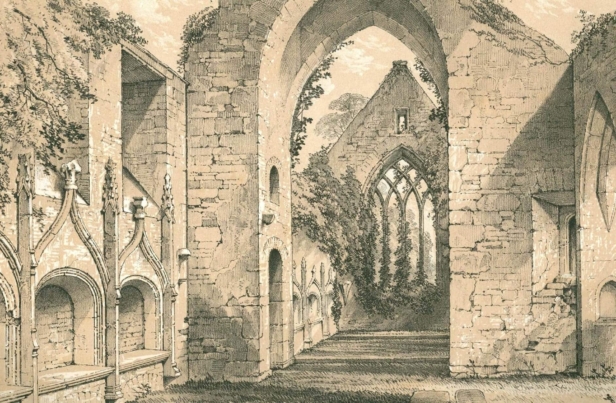
1600s
The Quin family settles in Adare. The first recorded member of the family in the village was Donagh Quin (d. 1671) He was buried in the Franciscan Abbey, a sign that he was a highly-placed and well-respected member of the community. At the time of his death, his landholdings were relatively modest, producing about £100 a year in income. While this was a respectable living for the time, it was very far from a grand estate.
1670s-1720
Thady Quin, Donagh’s son, was urged by his father to take up a practical profession. He made his fortune as a country lawyer in Adare and by a series of financially advantageous marriages throughout his life. Over the years, he acquired large tracts of land in the area, including thousand-year leases on some of the forfeited Fitzgerald properties.


1720s
Valentine Quin, Thady’s eldest son, inherited his father’s property and leased land in Adare. He built on his father’s accomplishments and followed in his footsteps, buying the leased land outright and purchasing more in the 1720s. He also married a wealthy heiress, Mary Widenham of Court, Kildimo. Valentine probably built the first documented Quin family house in Adare. Built on the former manorial demesne, it was simply named “Adare House”. The two-story house faced south, with seven bays, a three-bay pedimented breakfront, and tall chimney stacks with a steeply pitched roof. The house faced over a plain garden with strict geometric topiaries, and the surrounding estate was dominated by formally laid out avenues and tall boundaries of trees.
1760s-1780s
Valentine’s son Windham was the first of the family to become a Member of Parliament in the 1780s and his wife Frances Dawson made alterations to the house in Adare: they added a storey and moved the entrance away from the south face to the north-west. The grounds were redesigned in the popular naturalistic style of the time, with carefully constructed vistas and landscape views.


1752-1801
Windham Quin’s eldest son, Valentine Richard Quin, married Lady Frances Muriel Fox Strangeways, daughter of the 1st Earl of Ilchester in 1777, by whom he had four children. He became a British Baronet in 1781 and was raised to the peerage in 1800 as Baron Adare.
1801-1806
Valentine Richard Quin moved to England, leaving the estate in the hands of his eldest son, Windham Henry Quin, then 19 years old. The estate at this time was beset by heavy debts, but through strict economy and prudent management, Windham was able to slowly clear what was owed without resorting to selling off land. In 1806 he was elected MP for County Limerick, travelling often to England to fulfil his parliamentary duties.
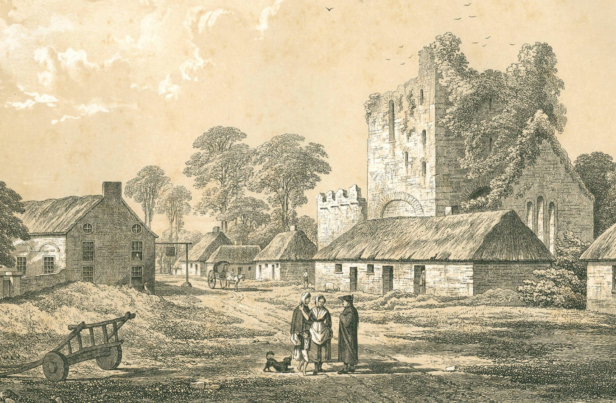

1810-1812
Windham Henry Quin married Caroline Wyndham, the only surviving child of a wealthy Welsh entrepreneur and fellow MP, Thomas Wyndham of Dunraven Castle, Glamorganshire, South Wales. She saw her role as one of duty towards those less fortunate. The young couple settled in London at first. After the birth of their first child, Edwin in 1812, Windham and Caroline returned to live on the family estate in Adare. She established a School of Needlework during the years of the Irish Famine to provide training for local women.
1814
On the death of his wife Caroline’s father, Windham Henry Quin acquired by royal licence the double barreled name of Wyndham Quin. The family Christian name is spelt Windham with an ‘i’ and the surname ‘Wyndham’ is spelt with a ‘y’.
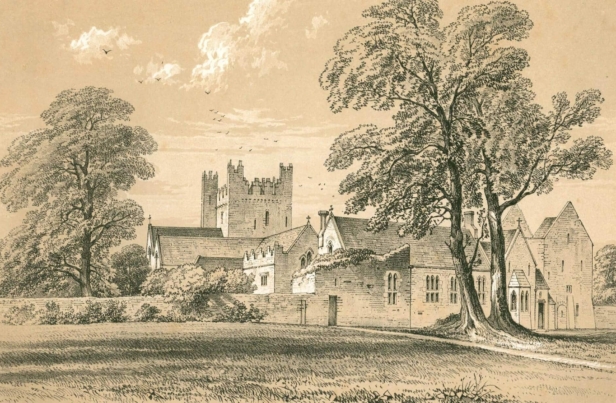
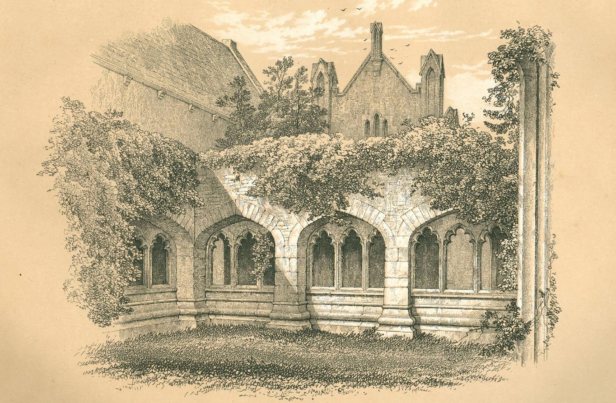
1816
Valentine Richard Quin, still living in England, was created Viscount Mount Earl.
1822
In 1822, just two years before his death Valentine Richard Quin was created Viscount Adare and the 1st Earl of Dunraven. He chose the title of Dunraven to honour his daughter in law, Caroline.


1824
The 1st Earl, Valentine Richard Quin, died, passing the title onto his son, Windham Henry Wyndham Quin, the 2nd Earl of Dunraven.
1827-1832
The 2nd Earl and his wife Caroline, having spent the early years of their marriage visiting many beautiful country houses in England and Ireland, had long discussed making significant changes to Adare House. When the active and energetic Earl found himself largely confined indoors by a crippling case of gout, Lady Caroline inspired him to at last take up the project of rebuilding the house in grand gothic style. The couple commissioned two architects, the brothers James and George Pain, to help them begin the transformation. The Pain brothers’ most important contribution to the Manor was the Gallery. The idea had come from Caroline and Windham who had a love for cathedrals with long naves, soaring arches and picturesque glass. At 132ft 6in long, 21ft wide and 21ft 6in high, the Gallery was the largest domestic room of its age in Ireland.


1839
The 2nd Earl travelled to England and was once again inspired by the sublime architecture of the country houses and towers he saw. He also brought home advice from L.N. Cottingham, an architect who would become one of the most important contributors to Adare Manor. Cottingham, like the 2nd Earl, was a member of the Oxford Society for Promoting the Study of Gothic Architecture. He was engaged to assist with the interior design of the new building, although he had never visited Adare. By 1840, Cottingham was an integral member of the design team.
1840s
The work on the new manor house, now known as Adare Manor, continued. It would be more than 30 years before it was completed. New sections were constructed around the old family home one by one, until part of the original structure was encased in the new building.


1850
The 2nd Earl of Dunraven died, passing the Earldom onto his son, Edwin Richard Wyndham Quin. He married Augusta Charlotte Goold in 1836, her father was Master of Chancery in the Law Courts of Dublin. Following his succession to the family title, Edwin saw it as a duty to complete the rebuilding of the family home begun by his parents. There was still much work to be done to complete his father’s vision. As Lord Lieutenant from 1864 until his death in 1871, he acted as The Queen’s representative in County Limerick.
1857
The terraced lawns and large gardens located to the south of Adare Manor were created by Edwin. Work began on these in 1857 but proceeded intermittently throughout 1858 as the designs for the gardens kept changing month to month.
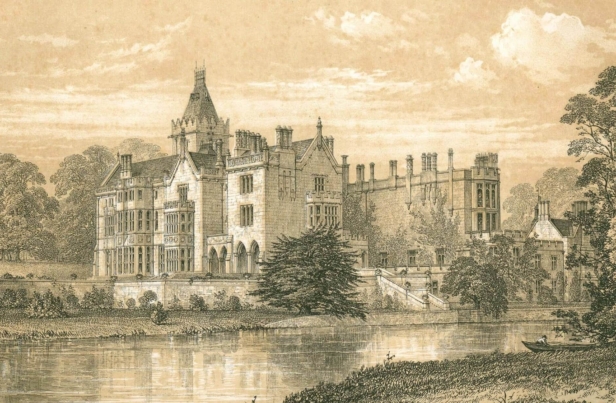

1871
The 3rd Earl of Dunraven passed away. His son Windham Thomas Wyndham Quin became the 4th Earl of Dunraven. Windham served as a Lieutenant in the 1st Life Guards, a Cavalry regiment, later becoming a war correspondent for the London Newspaper: ‘The Daily Telegraph’. He married Florence March Kerr. They had three daughters: Florence, Rachel and Aileen. Windham presided over the Land Conference in 1902, which led to the Land Act a year later, a piece of legislature which enabled tenants to purchase land from their landlords under favourable conditions. He is shown here wearing the blue sash of the Order of St Patrick, painted in 1922, two years before his death. The galleon in the background recalls his interest in sailing. He was a challenger for the America’s Cup in 1893 and 1895.
1897
The most distinguished guest at Adare Manor in the nineteenth century was the Duke of York, who in 1910, became George V following the death of his father, King Edward VII. He and his wife, the Duchess of York, were entertained at Adare Manor in August 1897.

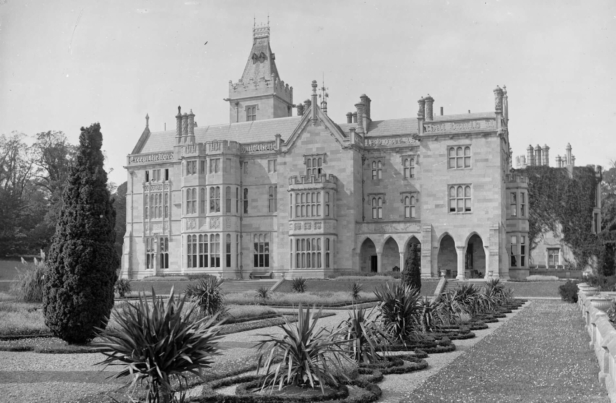
1926
As the 4th Earl of Dunraven died without a male heir, the Earldom passed to his cousin Windham Henry Wyndham Quin, who was the son of the 2nd Earl’s youngest son. Windham, the 5th Earl, had a distinguished military career, serving in the first and second Boer Wars. In the background of his portrait is a bronze sculpture of a mounted cavalry officer. A reference to his role as Commander of the Glamorgan Imperial Yeomanry: a volunteer cavalry regiment of the British Army. Windham Henry was elected as MP for South Glamorganshire in 1895 and again in 1900. He married Eva Constance Aline Bourke in 1885 She was the daughter of The Earl of Mayo of Palmerstown House, Naas Co Kildare. They had four children: Richard, Valentine, Olein and Kathleen.
1952
The 5th Earl of Dunraven dies, and his eldest son Richard Southwell Windham Robert Wyndham-Quin becomes the 6th Earl. He was born in the hills of Tamil Nadu, India where his father was stationed. He married his wife, Nancy Yuille in 1934 in Palm Beach where they met. They had three children: Lady Melissa, Lady Caroline and Viscount Adare.


1965
After the death of the 6th Earl of Dunraven, the title is inherited by his only son, Thady Windham Thomas Wyndham Quin. He married Geraldine McAleer in 1969 and they have one daughter, Lady Ana. He devoted his life to the running of the Estates and campaigning for the disabled in Ireland; Thady had contracted poliomyelitis as an adolescent and was a wheelchair user for the rest of his life. He held the honour of Patron of the Irish Wheelchair Association for twenty years. With no male heir, the Earldom and his other titles became extinct on his death in March 2011.
1981
At a time when there was little state support for historic houses in Ireland, he made the difficult decision to sell the family seat, Adare Manor.

1988
Adare Manor becomes a 5 star hotel.